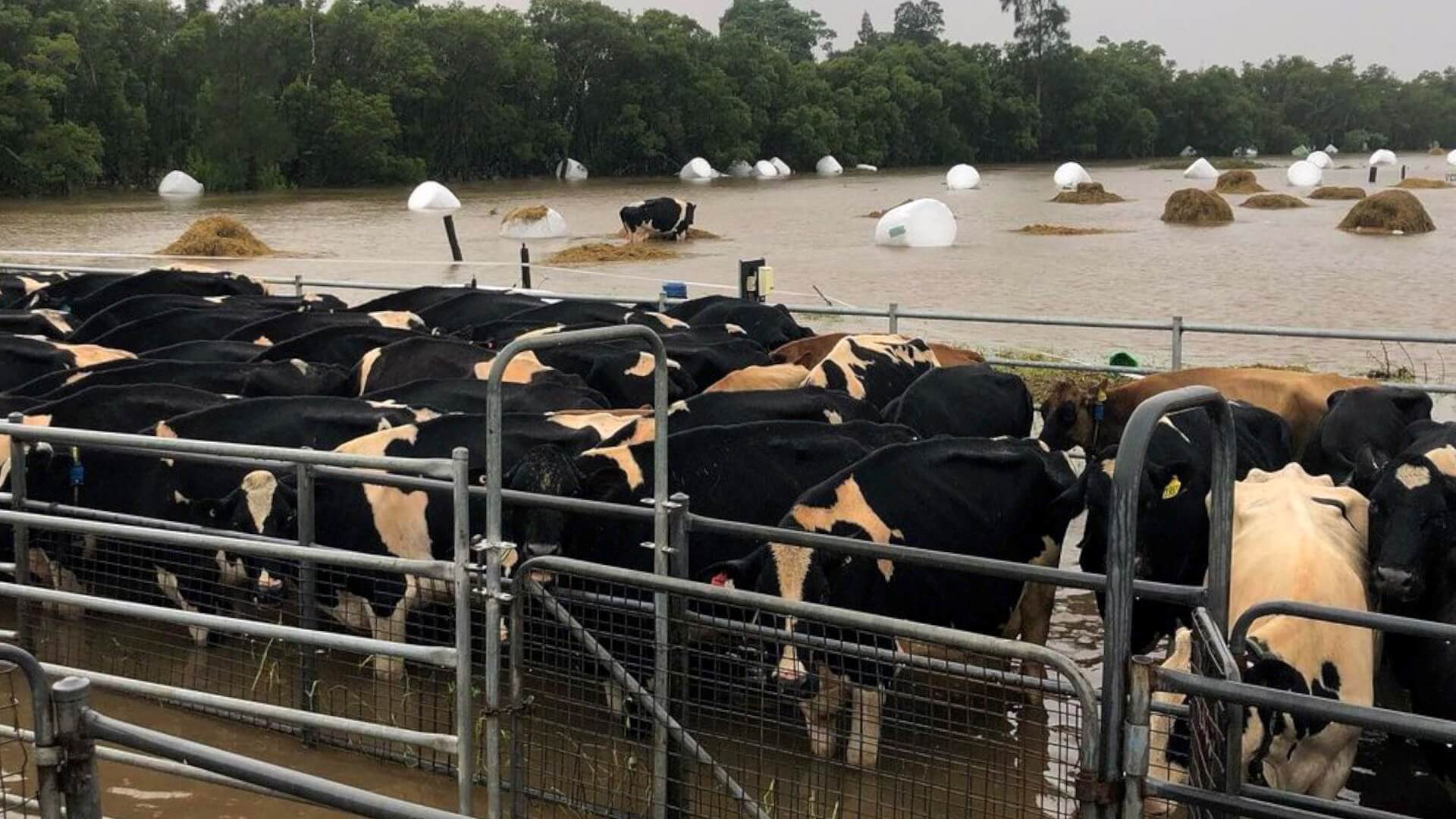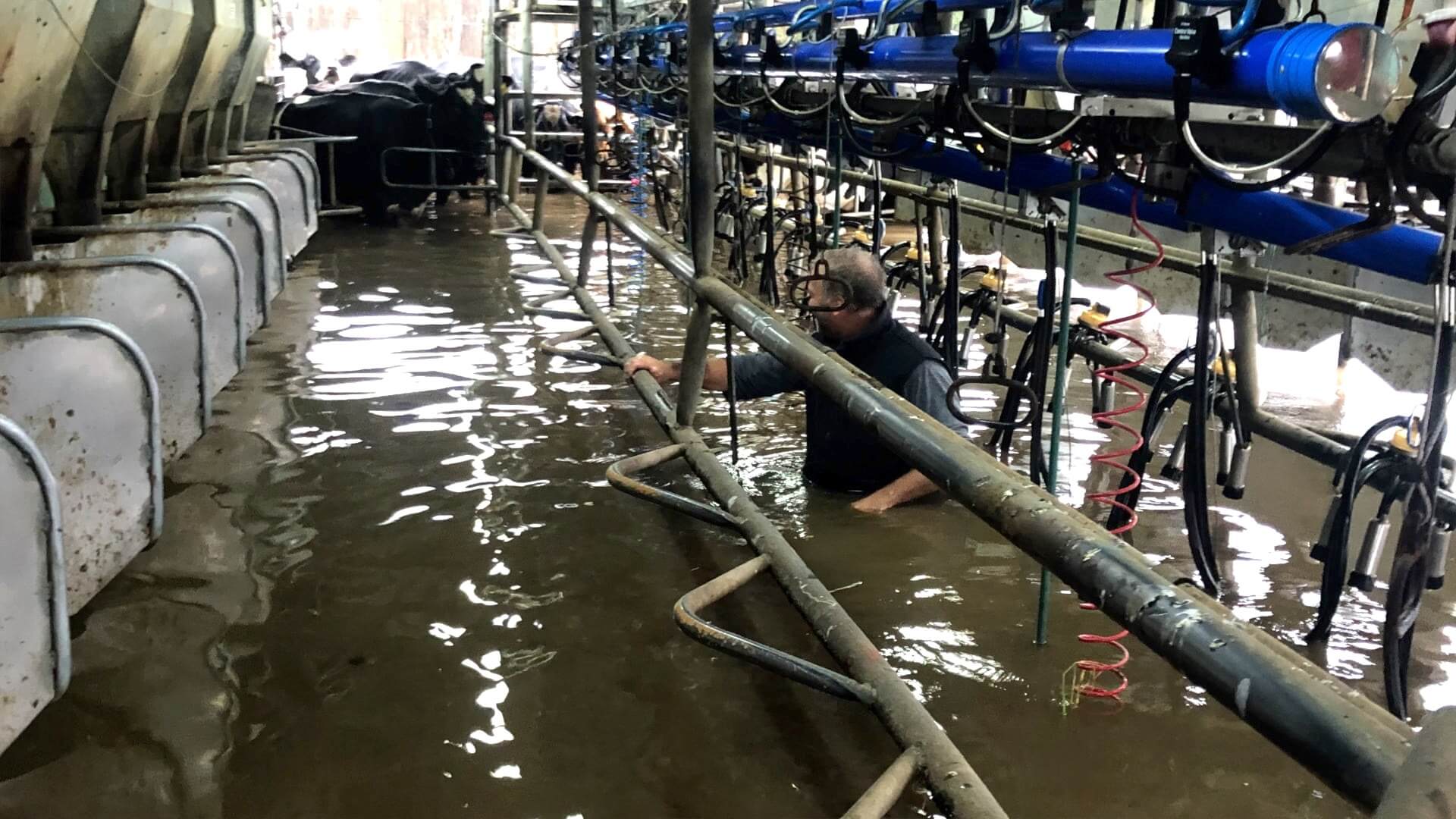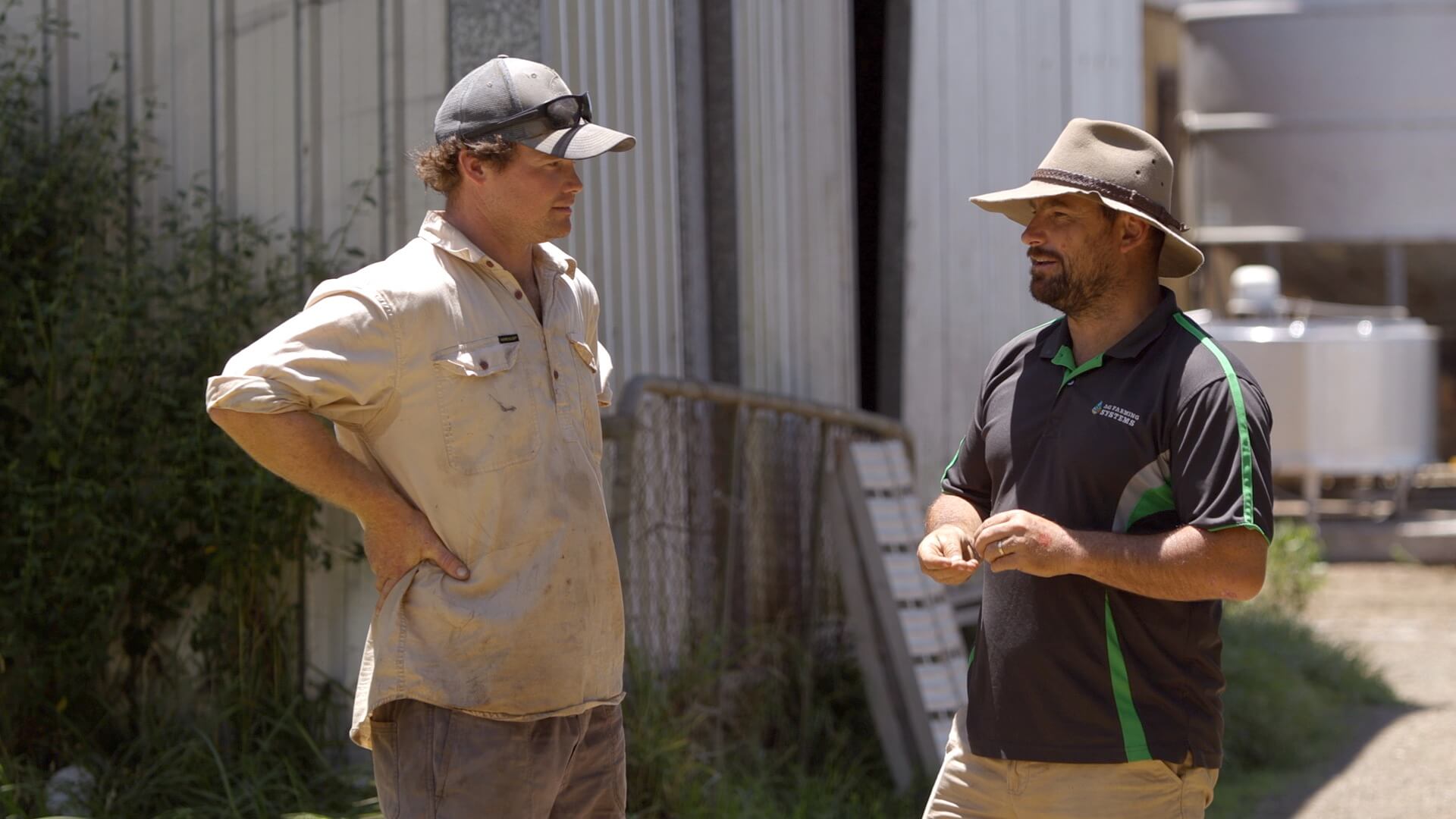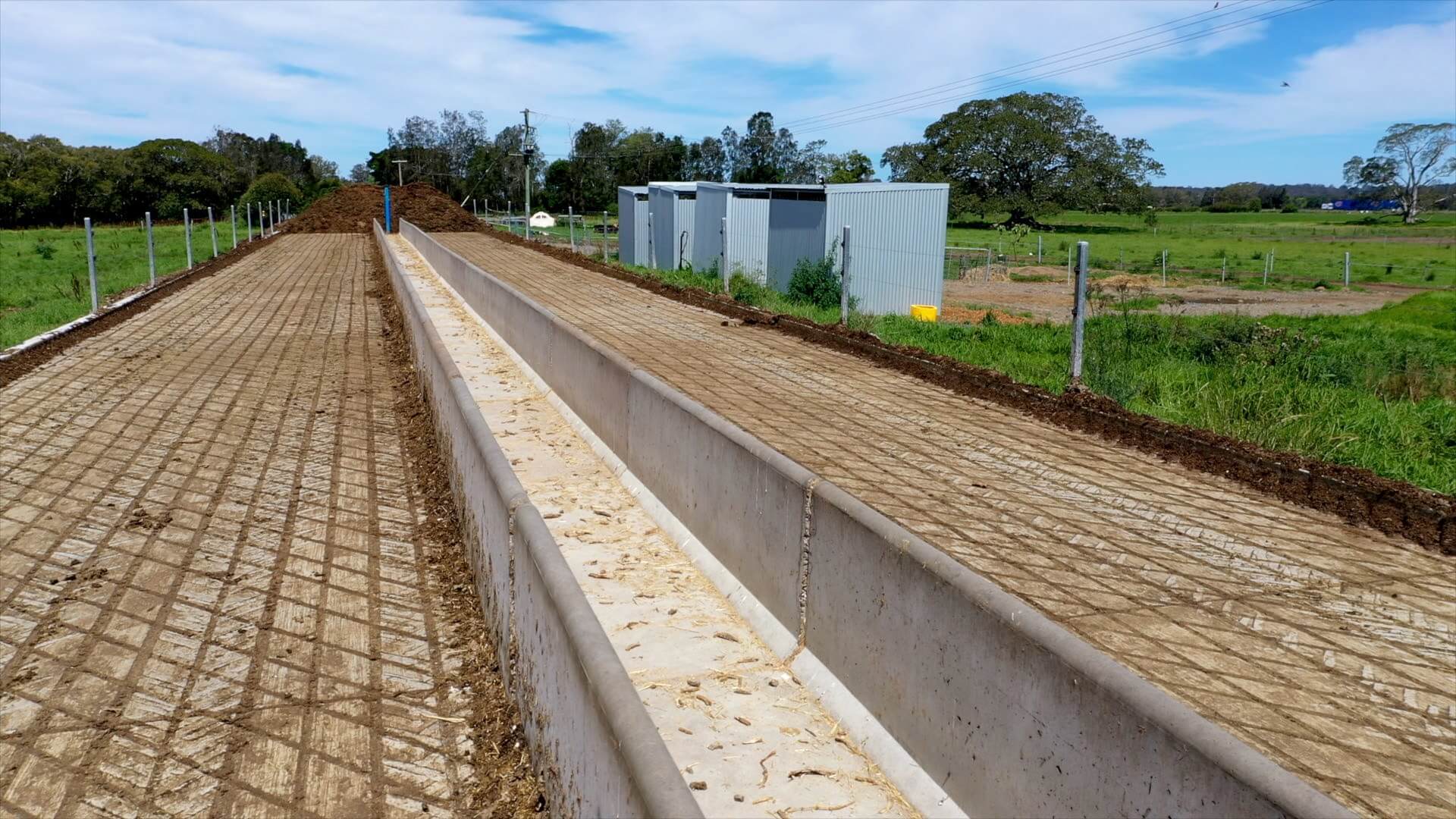Supporting dairy farmers through flood recovery case study
Producer: Geoff, Megan, Sam and Rachael Nicholson
Location: Jones Island, Manning Valley NSW
Enterprise: dairy cattle
Nicholson's flood story
The Nicholson family from Jones Island in the Manning Valley had been farming dairy cattle for several years before the floods in 2021.
The nearby town, Taree was inundated with near record floodwaters after 900 mm of rain fell in February and March 2021. Another 800 mm of rain fell in February and March 2022 followed by ongoing wet weather which compounded the impacts of the initial flooding.
The floodwaters cut off the Nicholson's farm from the highway stopping tankers being able to collect milk for 8 days, meaning it had to be tipped down the drain. They also lost hundreds of bales of silage which would feed their cattle the following autumn and winter. Floodwaters and prolonged inundation also destroyed their pastures leaving them with no feed.


Support with flood recovery
The Early Needs Recovery Program provided support to the most impacted dairy farmers in the North Coast and Hunter regions through tailored one-on-one consults by industry experts for up to 2 years.
The Nicholson’s chose Josh Hack from Ag Farming Systems and with his support, were empowered to re-establish themselves in the industry. Josh mentored the family and provided tailored advice on the best way forward for recovery after the floods. With this strong support network and the confidence to prioritise hard decisions, they were able to innovate and future proof their dairy farm.

Preparing for future floods
When flood waters receded on the Nicholson’s dairy farm, animal health and welfare were the main priorities. With the advice and support received through the one-on-one consultations and from Local Land Services, the Nicholson’s made informed decisions and on ground changes on their farm to help build resilience. They made their own silage and started growing summer crops for the first time easing pressure on their grazing systems.
A concrete pad was also installed on higher ground allowing cattle to be fed on dry ground during flood events and wet periods. This change will not only improve animal health but also reduce feed wastage from around 30% to 3%, reducing costs and preparing for future disasters.

These changes have allowed the Nicholson’s to feel more positive about the future of the family farm and the dairy industry as a whole.
Watch the full story on the Nicholson's flood recovery with help from the Early Needs Recovery Program which help put plans in place to better respond to future natural disasters.
The Early Needs Recovery Program is designed to assist primary producers in the most flood-impacted regions and industries in their recovery from the severe weather storms and flooding events that occurred in early 2022 along the east coast of NSW.